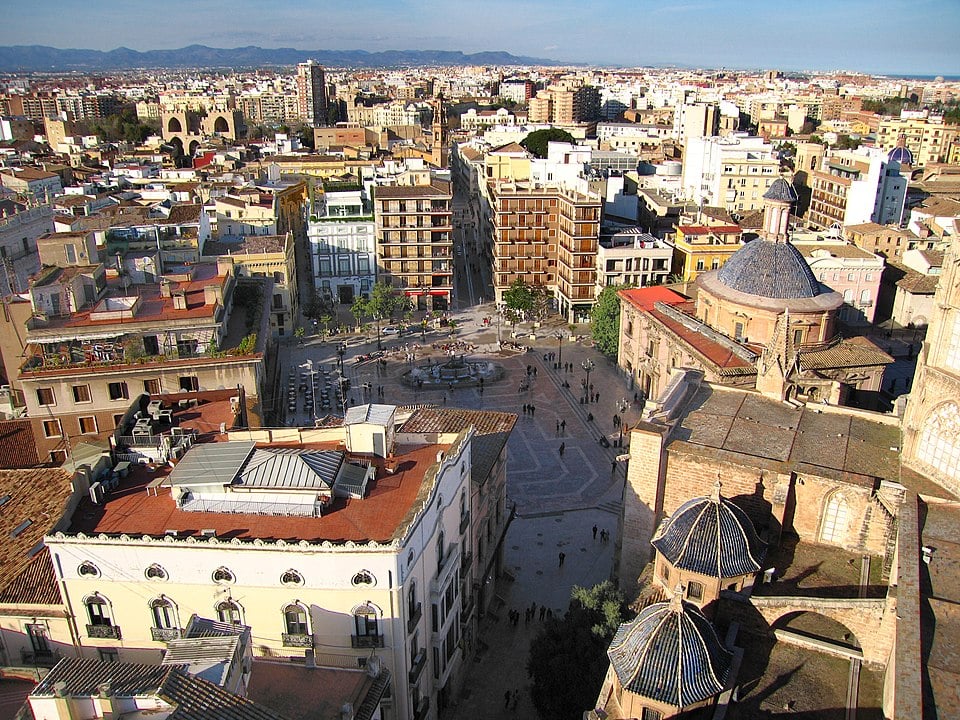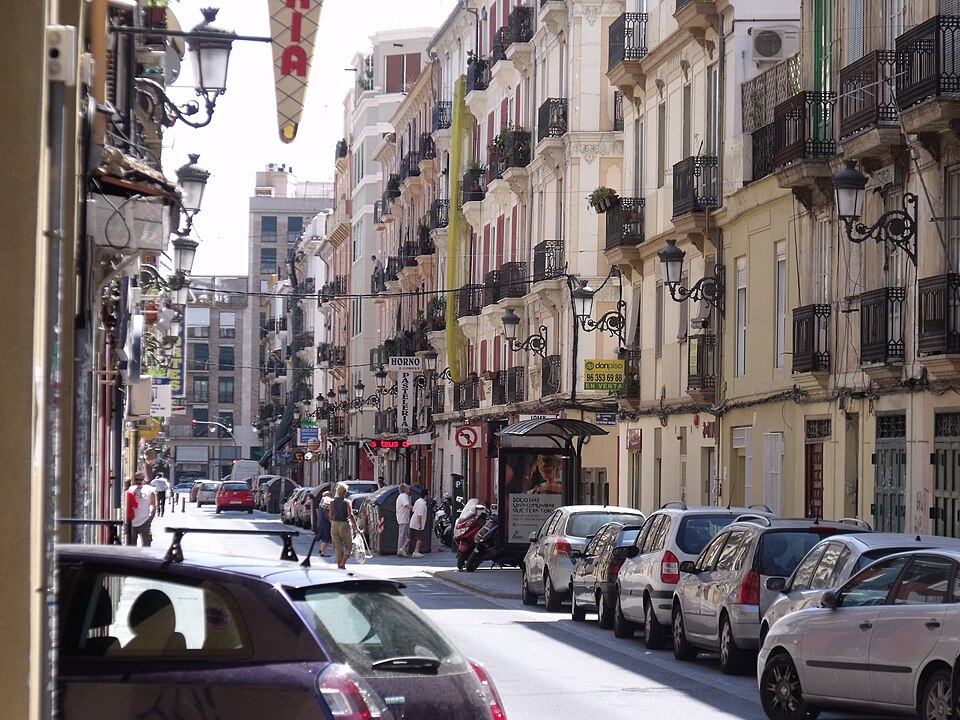El Carmen
The Barrio del Carmen (see photo above) lies right in the centre of the city and is part of the Ciutat Vella or Old Town. It’s great if you want to be right in the heart of the action close to lots of bars, cafes and shops. It’s ideal for those who love Spain’s iconic cute narrow streets and historic architecture. This neighbourhood lies within easy walking distance to almost everywhere. The only place that you might want to hop on the tram to is the beach. The only drawback is that this area can get particularly crowded with tourists, especially in summer and during the Las Fallas festival at the end of March. It can also be quite noisy, given the number of late-night bars that can be found down its narrow streets.
La Seu
The oldest part of Valencia, the neighbourhood of La Seu centres around the Cathedral and is also part of the Ciutat Vella. It’s both the religious and political centre of the city and is home to some of its most impressive buildings. Like its neighbour, the barrio del Carmen above, if you live here, you’ll be at the heart of everything and be able to walk to everywhere (except the beach). It can also get quite noisy and crowded however, especially in summer when people sit outside on bar terraces at night.

El Cabanyal
The city’s old fisherman’s district, El Cabanyal (or El Cabañal) was one of the poorest areas of the city until very recently – full of old crumbling apartment buildings and several unsavoury characters. In recent years however it has been getting a facelift – apartments have been renovated, new businesses have opened and younger people have moved in.
Now one of the city’s most up-and-coming neighbourhoods, El Cabanyal is ideal for those who want to be just steps from the beach and love traditional old colourful architecture. The only drawback of living here is that you’re quite far from the city centre, so may need to spend quite a bit of time travelling back and forth on the tram.

El Pla del Remei and Gran Vía
El Pla del Remei and Gran Vía are located in the L’Eixample district – the extension of the city and are more modern than the neighbourhoods in the Old Town. El Pla del Remei and Gran Vía comprise Valencia’s main shopping hub and are filled with all the most popular high street stores, fashion boutiques and upscale apartment buildings.
They’re centred around the art nouveau Mercat de Colón – a grand historic market that has been fully renovated and is now filled with an array of trendy bars and restaurants. Bordering the green lung of the city – the Turia Gardens on one side and the Ciutat Vella on the other, they offer one of the best locations in the city. The main drawback is that rental prices are high here and you can get a lot more for your money elsewhere. They are also very busy areas, so you may want to consider somewhere quieter if that’s what you’re after.

El Botànic
El Botànic lies in the district of Extramurs, to the west of the Ciutat Vella and borders the tranquil Turia Gardens. The area also comprises the city’s leafy Botanical Gardens, of which it’s named after. Live here if you want to be within walking distance to the Old Town and all its bars and restaurants, but also want a more relaxed vibe, surrounded by greenery and nature. The neighbourhood has plenty of its own sights too, including museums, a quaint market place and the Torres de Quart – the twin gothic-style defence towers which once formed part of the city wall.

Ruzafa
Ruzafa lies just south of the Ciutat Vella on the eastern side of the grand main central train station. The city’s coolest barrio, it’s home to hipsters, young people and plenty of interesting bars and restaurants. Its trendy alternative vibe means you’ll find everything from vegetarian and vegan cafes to bars hidden in book shops and antique stores. Attracting young professionals, digital nomads and foreigners, it’s ideal for those who want to experience the city’s alternative nightlife and great restaurants. Because of its hipster status, accommodation prices have risen in Ruzafa a lot over the past five years or so, meaning that bargains are hard to find here anymore.

Colourful buildings in Valencia’s Ruzafa barrio. Photo: Northleg Official/Unsplash
Campanar
Campanar is the name given to the city’s fourth district, comprising Les Tendetes, El Calvari, Sant Pau and the neighbourhood of Campanar itself. Located outside of the city walls and on the other side of the Turia Gardens, Campanar was once a separate village filled with canals, fields and citrus orchards. Today, not much of that survives and most of the district is given over to high rises, shopping malls and wide boulevards. But, hidden in amongst all this you can still find the Old Town of Campanar with its colourful two-story houses, shady plazas and pedestrianised streets. It’s ideal for families and those who want a quieter and more local side to Valencian life, close to greenery – with the Bioparc Zoo on one side and the Turia Gardens on the other.

Benimaclet
One of Valencia’s least-known neighbourhoods, Benimaclet lies to the northeast of the city, close to two of the city’s universities. Because of this, it attracts many students and accommodation prices are a lot cheaper than they are in the more central neighbourhoods. But this is not Benimaclet’s only draw. The area, like Campanar, used to be a separate village, which was later annexed to the city, meaning that it has a more laidback and tranquil vibe. And it still feels like a village too with its proper houses instead of just apartment blocks, charming colourful architecture and attractive squares. It may lie further out than some of the neighbourhoods, but it’s just a quick metro ride into the centre for everything you need.




 Please whitelist us to continue reading.
Please whitelist us to continue reading.
Member comments